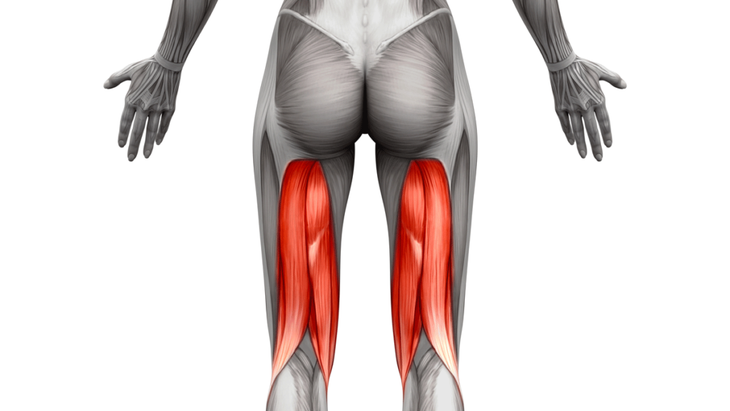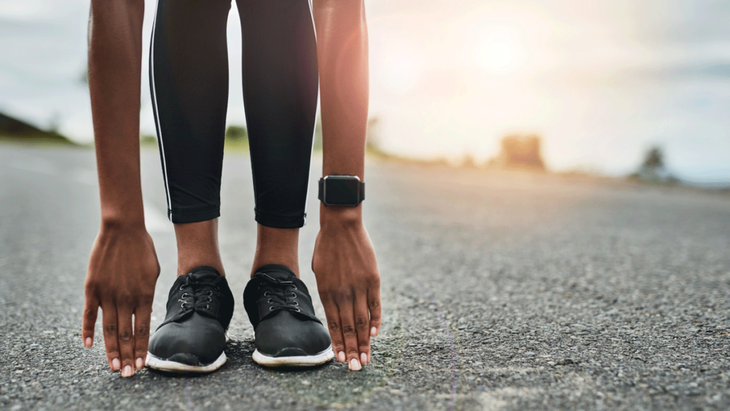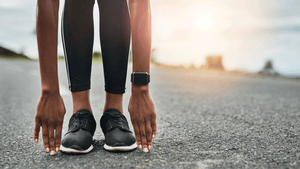Heading out the door? Read this article on the new Outside+ app available now on iOS devices for members! <a href="https://outsideapp.onelink.me/wOhi/6wh1kbvw" class="o-content-cta-link" data-analytics-event="click" data-analytics-data="{"name":"Element Clicked","props":{"destination_url":"https://outsideapp.onelink.me/wOhi/6wh1kbvw","domain":"<>","name":"in-content-cta","type":"link"}}”>Download the app.
Many athletes assume that having flexible hamstrings is something like a badge of honor. And while it can be helpful in your workouts and your everyday life, not everyone needs to have Cirque du Soleil-level stretching abilities that allow you to casually drop into the splits.
However, if you’re starting to experience telltale pain elsewhere in your body, experts say that it may be time to give the back of your legs a little extra attention.
The Anatomy of Your Hamstrings
Your hamstrings are complex: They’re comprised of three large muscles—the biceps femoris, semitendinosus, and semimembranosus—that stretch along the back of your leg from your hip to your lower knee.

“The hamstrings’ main function is to bend the knee and extend the hip, which is key for various everyday activities such as walking, running, and jumping,” says Alo Moves trainer Louis Chandler in Los Angeles. In other words, these mega muscles support all of those runs, hikes, and yoga postures. And when they start to become stiff, all your everyday tasks—from walking to bending over—may become more difficult.
If you favor explosive workouts, such as high-intensity interval training (HIIT) and sprinting, you’re likely familiar with hamstring pain. Injuries to the back of the leg are the most common non-contact injury in sports and are extremely likely to recur. However, focusing on hamstring mobility and flexibility can keep these pesky injuries away and allow you to move through your day and your workouts without pain.
If you’re not sure about the state of your hamstrings, Chandler offers a few telltale signs that it’s time to pay more attention to these muscles.
3 Signs That Your Hamstrings Need Some Stretches
1. You’re Experiencing Lower Back Tightness and/or Pain
In some ways, the human body is like a house of cards: Pull out the jack of hearts or the two of spades, and suddenly, the whole structure topples. While the anatomical equivalent isn’t quite that dramatic, muscle tightness in one area of the body can lead to overcompensation in other parts.
For example, Chandler says that inflexible hamstrings can cause your lumbar spine, or lower back, to compensate as you walk, sit, and go about your practice and your day. “The tighter the hamstrings, the more they pull on your sitting bones, tilting your pelvis backward,” he says. “This has a negative effect on the alignment of your spine.” Over time, this results in lower back pain.
2. Your Hips Feel Tight and Cranky
That tilt in your pelvis doesn’t just affect your lower back. The imbalance can also contribute to stiffness in the hips, as they overcompensate for your rigid hamstrings by supporting your lumbar spine.
3. Your Knee Hurts
Since your hamstring’s three muscles extend all the way to your lower knee, you may experience some pain in that joint due to a lack of flexibility. When those bands of tissue are tight, it can hinder your knee’s ability to straighten and bend. Your knee may respond by pulling on that hamstring, which can lead to a slew of injuries, including osteoarthritis. If everyday movement makes your knee(s) ache, your hamstrings might be begging to be stretched.

Hamstring Stretches to Improve Your Flexibility
Stretching your hamstrings is an easy practice to incorporate into your day. Waiting for your microwave burrito to be ready? Drop into a quick forward fold. Meeting your running partner at the park? Place one foot on a bench and reach for your toes.
If you want to take a more intentional approach to your routine, Chandler says you only need three stretches and five minutes a day. Even if you consider yourself completely inflexible, these movements will offer you some much-needed benefits.
1. Towel-Assisted Hamstring Stretch
“This is great for clients who may not have the best mobility and struggle to reach toward their toes,” Chandler says.
Sit on the floor with your legs extended in front of you. Loop a towel, yoga strap, or even a sweatshirt around the arch of one foot and keep your leg straight as you try to gently pull your foot toward you, creating a stretch in your hamstring. Remain here for 30 seconds and switch to the other leg.
2. Seated Forward Fold
Sit on the floor with your legs extended straight in front of you. Lengthen your spine, straighten your arms, and reach forward as far as you can without bending your knees. Don’t force your body. Stay here for 15 to 30 seconds, keeping your back straight and your core engaged.
3. Standing Forward Fold
Come to a standing position. Bring your feet shoulder-width apart or wider, depending on what feels appropriate for your body. Hinge at your hips and reach for your toes, maintaining a slight bend at your knees if necessary. Aim to have your chest rest on your thighs. Stay here for 15 to 30 seconds.
RELATED: How to Modify Your Yoga Practice for Tight Hamstrings





